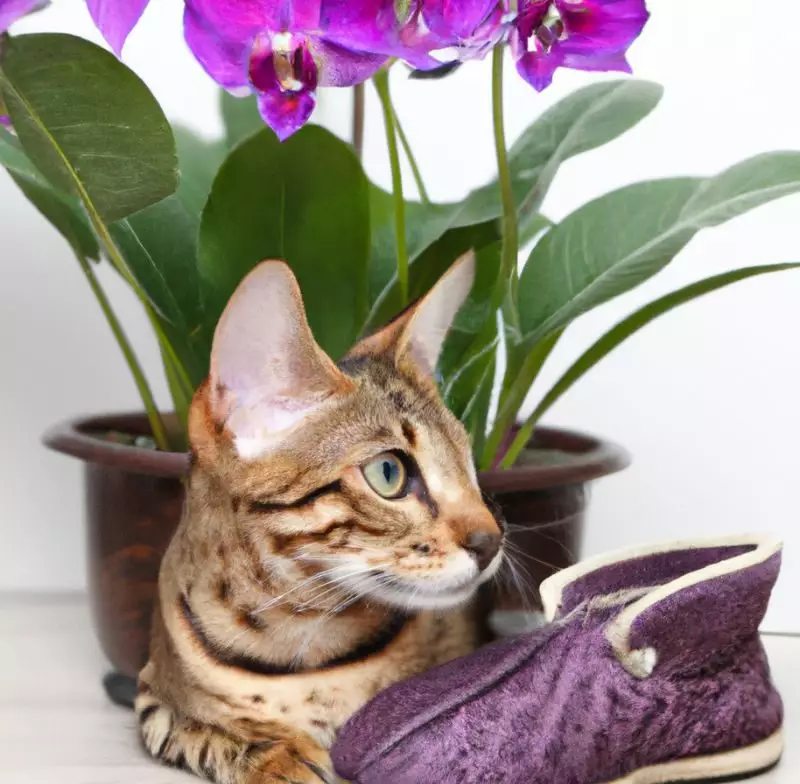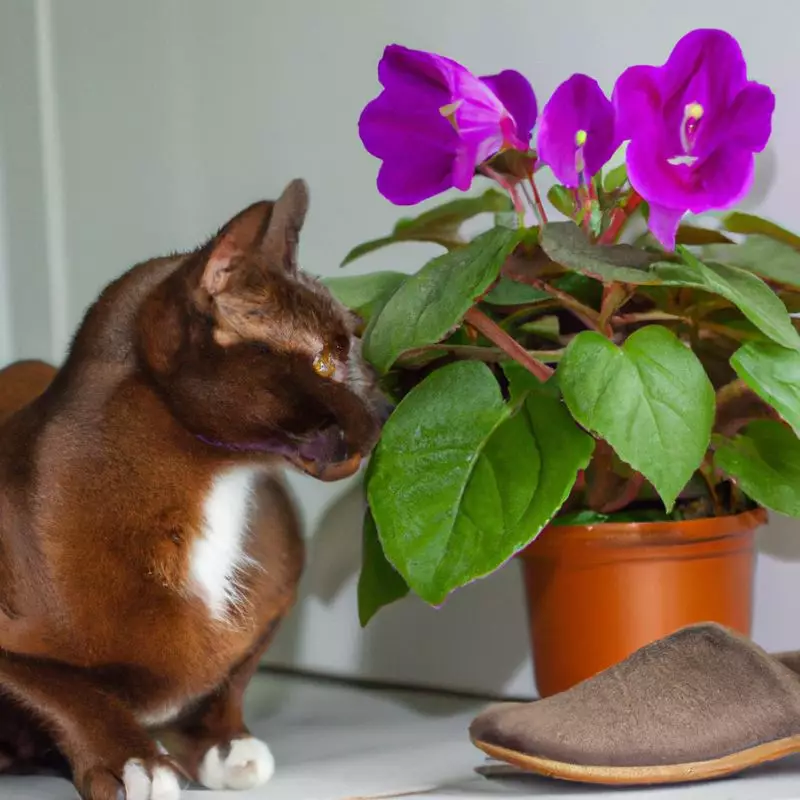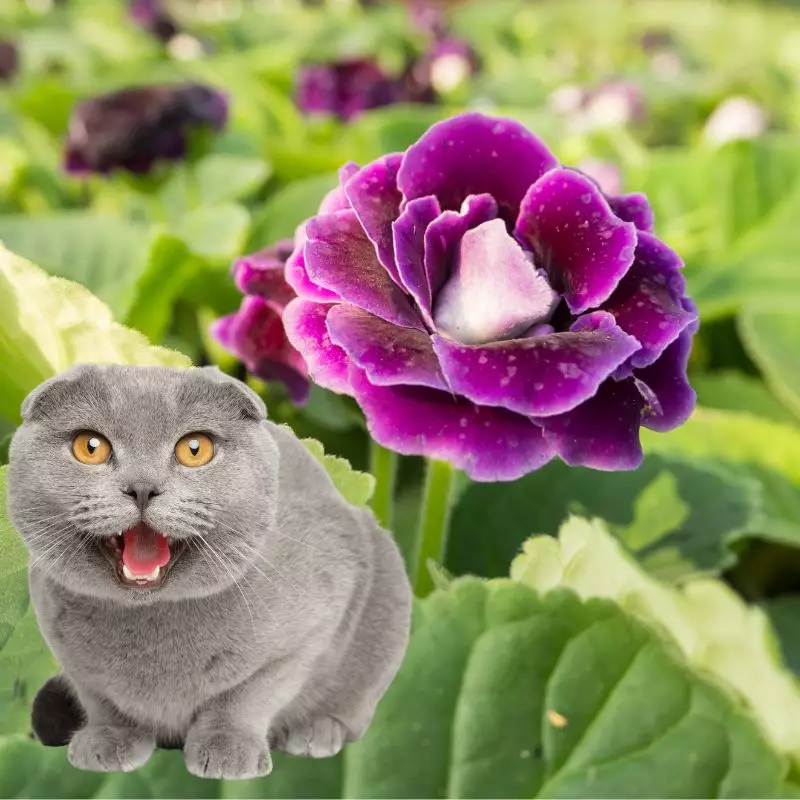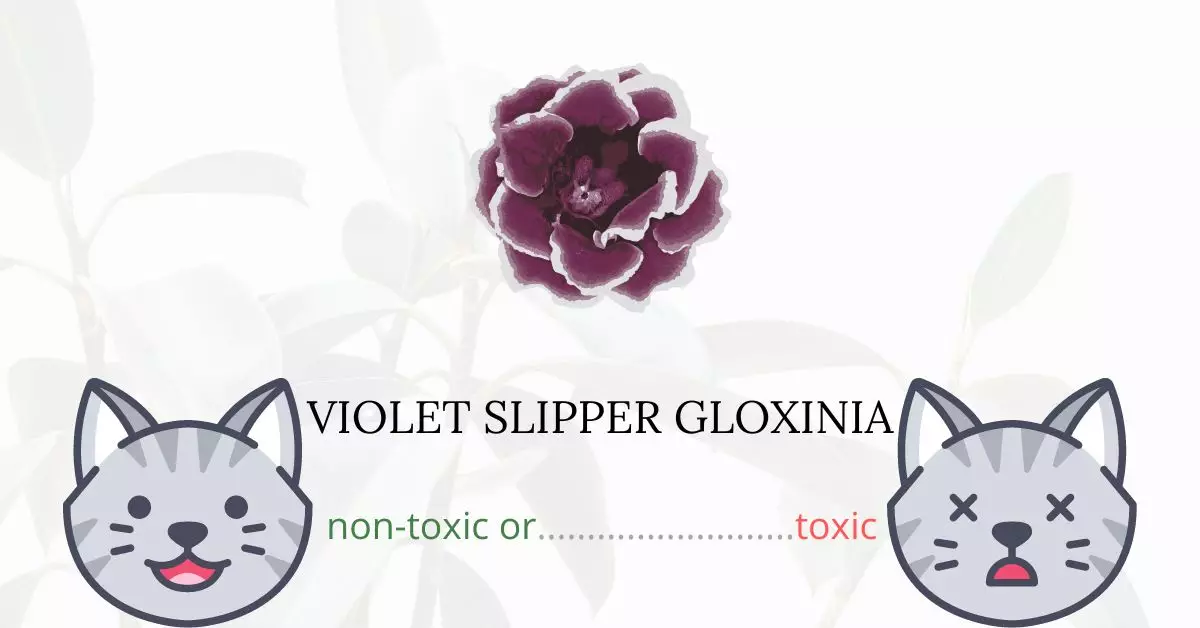The violet slipper gloxinia is not toxic to cats.
This article has been crafted in collaboration with a team of experienced DVMs (doctors of veterinary medicine). Their expertise and input ensure the accuracy and relevance of the information provided here. Furthermore, we’ve diligently researched high-authority websites such as the ASPCA and PetMD to corroborate our findings.
According to the American Society for the Prevention of Cruelty to Animals (ASPCA), the violet slipper gloxinia is indeed listed as a non-toxic plant not only for cats but also for dogs and horses. As with other gloxinia species, the violet slipper gloxinia does not contain harmful substances that might affect our feline companions. Hence, it can be confidently cultivated in homes that shelter cats.
Can Cats Eat Violet Slipper Gloxinia?

It will not harm your feline companions if they happen to nibble on a violet slipper gloxinia. Because this plant does not have poisonous content, you should not panic.
Because violet slipper gloxinias are plants, they are not suitable for cat consumption. Plant materials are difficult for cats to digest because their bodies lack the enzymes required for this process. As a result, cats who consume a lot of plants experience indigestion and other GI issues.
If your cat has indigestion, it may exhibit symptoms such as vomiting and diarrhea, among others. This is due to his body’s attempt to expel the plant materials. These clinical signs will disappear once the plants have exited the cat’s body.
What is Violet Slipper Gloxinia?

Violet slipper gloxinia is a tuberous flowering plant native to Brazil in the Gesneriaceae family. It was initially classified as Gloxinia but was later reclassified as Sinningia.
The leaves of violet slipper gloxinias are ovate velvety green and form a basal rosette. They require bright indoor lighting with no direct sunlight and constant humidity. After blooming in the spring, you can cut the leaves back to the first two leaves to encourage a second bloom. Then, reduce watering after the second bloom until the foliage dies back.
The flowers are large and measure up to 10cm across. The corollas are usually 6-8 lobed in single-flowered forms and may vary in double-flowered forms. The flower colors also vary with purple, lavender, red, white, and pink petals and corollas in some forms spotted or with other patterns.
Keeping Cats Away From Violet Slipper Gloxinia

Cats are repulsed by aromatic herbs such as rosemary, basil, and mint. You can keep your cat away from your plants by planting these herbs near them.
Lining the soil with citrus rinds is another common method of keeping cats away from plants because cats dislike the smell of citrus. Alternatively, you can also dilute the citrus juice with water and spray it on your plants. Using vinegar or apple cider instead of citrus might also work.
Plants to Avoid For Your Cats
If you are a cat owner and unsure if the plants growing in your yard are harmful to your cats, check out this list of toxic plants for cats. You can also check our list of non-toxic plants for cats.





